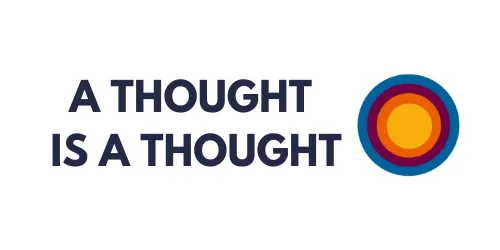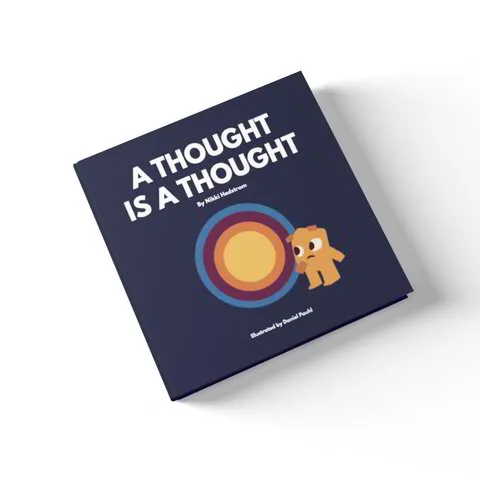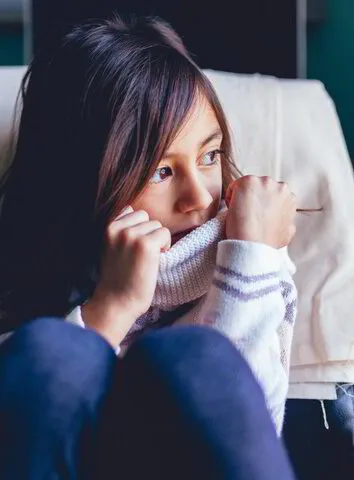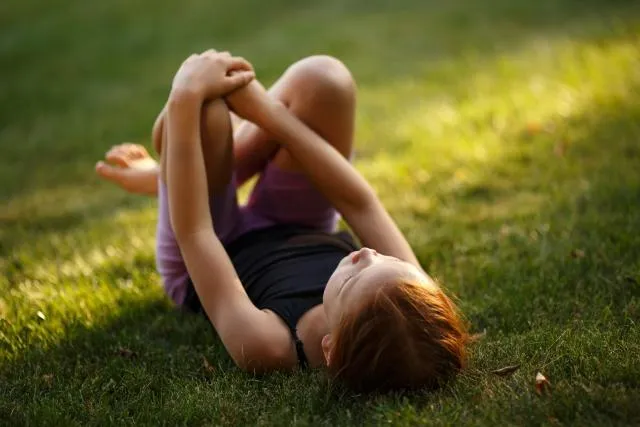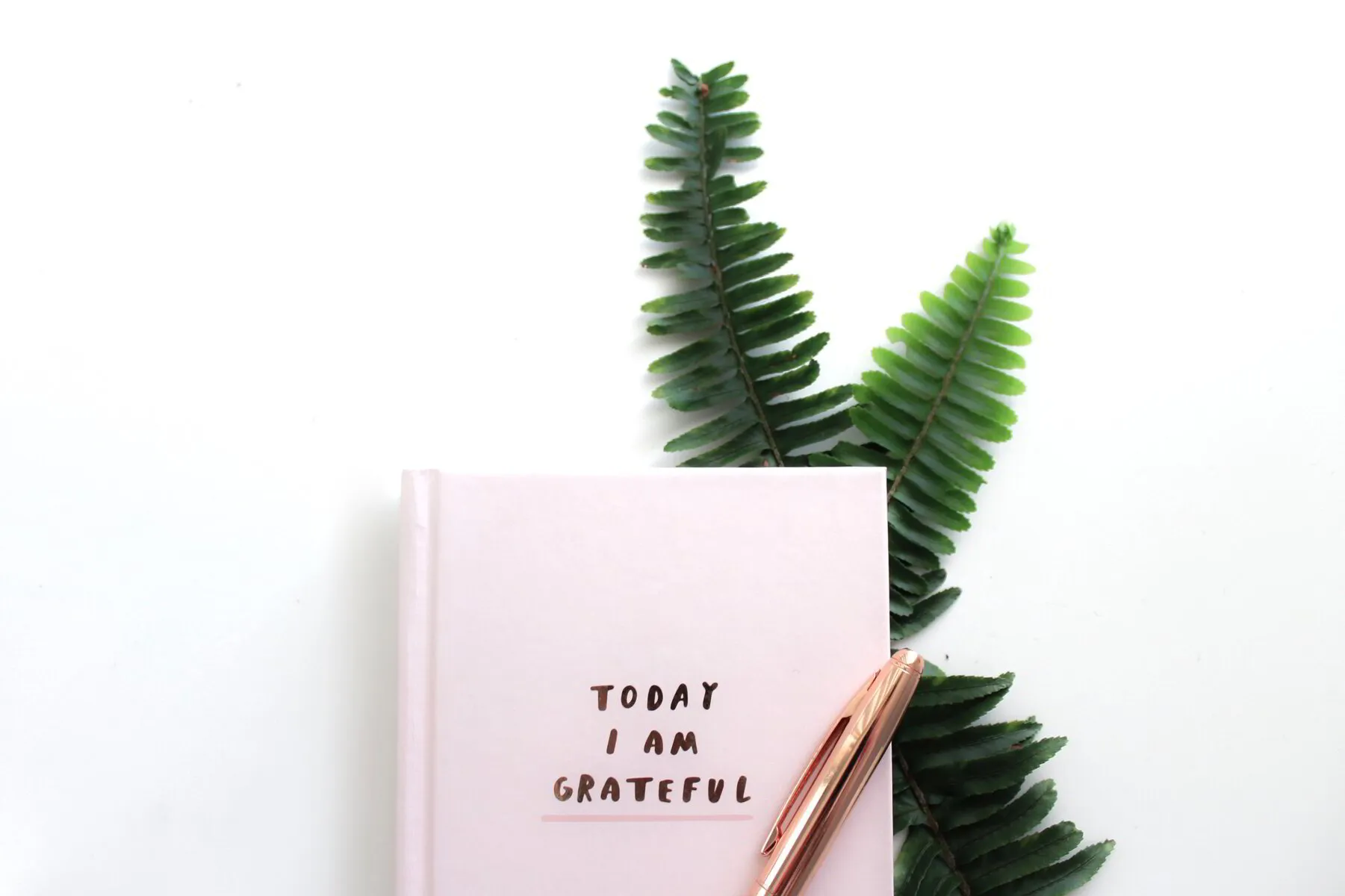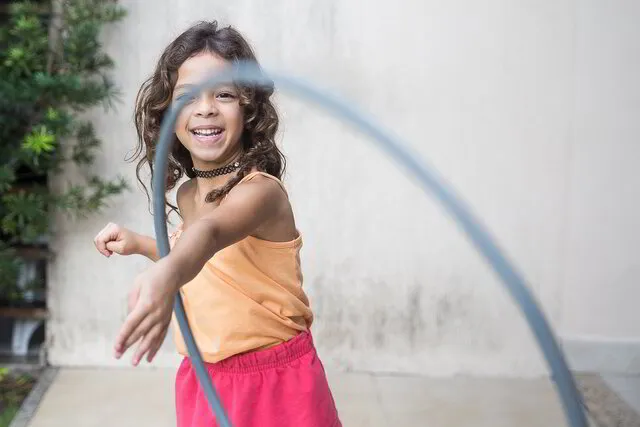Activities & Worksheets for Mindfulness
PROMOTING HEALTHY YOUNG MINDS
Mindfulness for Kids & Parents
Mindfulness for Kids & Parents
When I think back to being a kid, or even when I observe children playing, you can see how they can get lost in the present. Free play and movement of the body are great ways to reduce stress as kids tend to get lost in the moment versus being anxious about their upcoming spelling test. When it comes to various activities and mindfulness, not all activities are created equally. To no-one’s surprise… screen-time is not considered a mindful activity. And as a result, there are negative side effects to having your child have too much screen-time.
Mindful Breathing
Mindful Breathing
A key indicator of stress and anxiety is the frequency and depth of your breathing. I’m sure you’ve seen it before when your child is crying or upset and their breathing quick and shallow breaths. This type of breathing can create hyperventilation. (Read more to your left on normal breathing vs. hyperventilation)
The best way to incorporate a breathing practice for your anxious child is to have one of your own.
Breathing Exercise
Breathing Exercise
Teaching kids how to do deep breathing can be free, handy tool for them to self-soothe in stressful situations. To learn how to teach your anxious child deep breathing, download the worksheet.
Gratitude Practice for Kids to Reduce Anxiety
Gratitude Practice for Kids to Reduce Anxiety
Teach your child the power of gratitude. This practice can boost happiness and can benefit their mental health into adulthood.
Gratitude Worksheet For Kids
Gratitude Worksheet
The benefits of having a gratitude practice is that it helps program your brain to seek the positive. Anxious children tend to spend a lot of time thinking about the negatives, what can go wrong, what they could have done better. So a gratitude practice can help ensure they are taking some time out of each day to think about positive thoughts.
Be Where Your Feet Are - Being Present
Be Where Your Feet Are
There are so many benefits to living in the present moment. Learn how to talk to your child about being present versus living in the past or worrying about the future.
Children's Book Featuring Mindfulness Practices for Kids
Understanding the concept of thoughts is a challenge, even for adults. To help kids understand the fundamentals about thoughts and how they impact our emotions start with picking up this book.
Includes:
Thought exercises
Emotions chart
Positive affirmations
Breathing exercise
Mindfulness Practices for Kids
Understanding the concept of thoughts is a challenge, even for adults. To help kids understand the fundamentals about thoughts and how they impact our emotions start with picking up this book.
Includes:
Thought exercises
Emotions chart
Positive affirmations
Breathing exercise
Mindfulness Kids & Parents
When I think back to being a kid, or even when I observe children playing, you can see how they can get lost in the present. Free play and movement of the body are great ways to reduce stress as kids tend to get lost in the moment versus being anxious about their upcoming spelling test. When it comes to various activities and mindfulness, not all activities are created equally. To no-one’s surprise… screen-time is not considered a mindful activity. And as a result, there are negative side effects to having your child have too much screen-time.
As an anxious child, art was a great tool to calm my nervous system. I especially benefited from doing drawing that took a great level of my attention. If I was so focused on the task I was doing, I wasn’t able to worry about the other racing thoughts in my mind.
Getting physical and being outside was another great stress reliever for me. I loved to run in the grass barefooted connecting with my environment. These stress relievers have stood the test of time and still act as great anxious reducers for me. So if you are a parent that has stress, remember to make time to move your own body and encourage your little one to move along with you.
There has also been a lot of evidence that has shown that kids are more likely to share difficult feelings when you are walking or driving somewhere. Perhaps it’s that there isn’t direct eye contact or that there is another focal point but consider incorporating family walks and use it as a time to check in with your child.
Activities that will engage your child in mindfulness:
Drawing (especially when it comes to recreating a real life scene)
Colouring (check out our free worksheets)
Model / Lego building by instruction
Yoga
Puzzles
Reading
Playing and instrument
How to bring mindfulness into your routine
To circle back on the importance of mindfulness for the whole household, I want to help identify some opportunities to make time for mindfulness, even in the most hectic of routines.
Mindful Shower
For parents trying to find time to be more mindful and present, try being present while in the shower. See how long you can focus on just the feeling of the water on your body. Put your hand under the running water and see how it feels as it warms up. How does it feel when the water first hits your head and runs down your back? As someone who can’t always remember if she’s shampooed her hair, the shower is a great time to be present and take a moment for yourself.
Mindful Moments
Believe it or not, there are moment all throughout your day that you can practice being mindful. Taking the time to be mindful when you are brushing your teeth, emptying the dishwasher or folding laundry can all help give you a little positive boost. So long as your internal dialogue isn’t nattering away about how much you hate that you can never match the socks. Be present in the task and accept it as it is. Not wanting it to be something else, just be with it.
Look for moments where you can put down your phone, feel the breeze and listen intently. It’s important to remember people, particularly your child/children, will model their behaviour after yours so if you can get grounded and be present, hopefully you’ll positively influence others to do the same.
3 Present States Based on the Work of Eckhart Tolle
Part of living a more present, mindful life is understanding your state of consciousness in any given moment of time. The famous Spiritual Teacher & #1 New York Times Bestselling Author, Eckhart Tolle teaches we have three present/awakened states of “doing”: acceptance, enjoyment and enthusiasm in his book A New Earth: Awakening to your Life’s Purpose.
Acceptance
In challenging times, you may find yourself needing to accept the moment as it is. Performing an action in the state of acceptance, means you are at peace while doing it.
From a parent’s perspective:
Typically less pleasant tasks:
i.e. changing a flat tire in the rain
From a child’s perspective:
Less pleasant tasks:
i.e. completing household chores, studying, tagging along on their parent’s errands.
Enjoyment
Enjoyment is when you accept the moment and your actions for what they are. Not wishing the action to be anything but the current experience you are having.
From a parent’s perspective:
i.e. having a pleasant family dinner, enjoying a movie or games night with your kid(s), reading a book for pleasure.
From a child’s perspective:
i.e. Playing with friends, enjoying a movie or games night, going to the park.
Enthusiasm
Enjoyment of what you are doing, combined with a goal or vision that you work toward, becomes enthusiasm.
This connects to the feeling of “flow”, when the actions are flowing through you. You are the conduit.
From a parent’s perspective:
This varies person to person, but it is generally something you can lose yourself in, losing track of time. It can be writing or creating or diving into something you’re passionate about.
From a child’s perspective:
i.e. playing a sport they love, self expression through dance, art and physical movement that brings them joy.
The 3 States for the Anxious Child
For an anxious child, it would be a victory if you could shift their worried state (either reflecting on the past, or worrying about what will happen in the future) to accepting where they are in a given moment. However, it is more likely to find children in the following two states of being, enjoyment and enthusiasm. Particularly since they are more likely to get lost in the present when they are having a pleasant/enjoyable experience.
If you catch yourself in a present moment that isn’t enjoyable for yourself, or perhaps for your child, try to encourage acceptance. The friction of not wanting to be in the present moment causes additional angst.
Mindfulness Kids & Parents
When I think back to being a kid, or even when I observe children playing, you can see how they can get lost in the present. Free play and movement of the body are great ways to reduce stress as kids tend to get lost in the moment versus being anxious about their upcoming spelling test. When it comes to various activities and mindfulness, not all activities are created equally. To no-one’s surprise… screen-time is not considered a mindful activity. And as a result, there are negative side effects to having your child have too much screen-time.
As an anxious child, art was a great tool to calm my nervous system. I especially benefited from doing drawing that took a great level of my attention. If I was so focused on the task I was doing, I wasn’t able to worry about the other racing thoughts in my mind.
Getting physical and being outside was another great stress reliever for me. I loved to run in the grass barefooted connecting with my environment. These stress relievers have stood the test of time and still act as great anxious reducers for me. So if you are a parent that has stress, remember to make time to move your own body and encourage your little one to move along with you.
There has also been a lot of evidence that has shown that kids are more likely to share difficult feelings when you are walking or driving somewhere. Perhaps it’s that there isn’t direct eye contact or that there is another focal point but consider incorporating family walks and use it as a time to check in with your child.
Activities that will engage your child in mindfulness:
Drawing (especially when it comes to recreating a real life scene)
Colouring (check out our free worksheets)
Model / Lego building by instruction
Yoga
Puzzles
Reading
Playing and instrument
How to bring mindfulness into your routine
To circle back on the importance of mindfulness for the whole household, I want to help identify some opportunities to make time for mindfulness, even in the most hectic of routines.
Mindful Shower
For parents trying to find time to be more mindful and present, try being present while in the shower. See how long you can focus on just the feeling of the water on your body. Put your hand under the running water and see how it feels as it warms up. How does it feel when the water first hits your head and runs down your back? As someone who can’t always remember if she’s shampooed her hair, the shower is a great time to be present and take a moment for yourself.
Mindful Moments
It might sound crazy, and it probably does, but even taking the time to be mindful when you are brushing your teeth, emptying the dishwasher or folding laundry can all help give you a little positive boost. So long as your internal dialogue isn’t nattering away about how much you hate that you can never match the socks. Be present in the task and accept it as it is. Not wanting it to be something else, just be with it.
Look for moments where you can put down your phone, feel the breeze and listen intently. It’s important to remember people, particularly your child/children, will model their behaviour after yours so if you can get grounded and be present, hopefully you’ll positively influence others to do the same.
3 Present States Based on the Work of Eckhart Tolle
Part of living a more present, mindful life is understanding your state of consciousness in any given moment of time. The famous Spiritual Teacher & #1 New York Times Bestselling Author, Eckhart Tolle teaches we have three present/awakened states of “doing”: acceptance, enjoyment and enthusiasm in his book A New Earth: Awakening to your Life’s Purpose.
Acceptance
In challenging times, you may find yourself needing to accept the moment as it is. Performing an action in the state of acceptance, means you are at peace while doing it.
From a parent’s perspective:
Typically less pleasant tasks:
i.e. changing a flat tire in the rain
From a child’s perspective:
Less pleasant tasks:
i.e. completing household chores, studying, tagging along on their parent’s errands.
Enjoyment
Enjoyment is when you accept the moment and your actions for what they are. Not wishing the action to be anything but the current experience you are having.
From a parent’s perspective:
i.e. having a pleasant family dinner, enjoying a movie or games night with your kid(s), reading a book for pleasure.
From a child’s perspective:
i.e. Playing with friends, enjoying a movie or games night, going to the park.
Enthusiasm
Enjoyment of what you are doing, combined with a goal or vision that you work toward, becomes enthusiasm.
This connects to the feeling of “flow”, when the actions are flowing through you. You are the conduit.
From a parent’s perspective:
This varies person to person, but it is generally something you can lose yourself in, losing track of time. It can be writing or creating or diving into something you’re passionate about.
From a child’s perspective:
i.e. playing a sport they love, self expression through dance, art and physical movement that brings them joy.
The 3 States for the Anxious Child
For an anxious child, it would be a victory if you could shift their worried state (either reflecting on the past, or worrying about what will happen in the future) to accepting where they are in a given moment. However, it is more likely to find children in the following two states of being, enjoyment and enthusiasm. Particularly since they are more likely to get lost in the present when they are having a pleasant/enjoyable experience.
If you catch yourself in a present moment that isn’t enjoyable for yourself, or perhaps for your child, try to encourage acceptance. The friction of not wanting to be in the present moment causes additional angst.
Mindful Breathing for Kids & Parents
A key indicator of stress and anxiety is the frequency and depth of your breathing. I’m sure you’ve seen it before when your child is crying or upset and their breathing quick and shallow breaths. This type of breathing can create hyperventilation. (Read more to your left on normal breathing vs. hyperventilation)
The best way to incorporate a breathing practice for your anxious child is to have one of your own.
Breathing Exercise for Parents:
Diaphragmatic Breathing
Get into a comfortable position. Close your eyes and bring your attention to your body and breath. Inhale deeply through your nose, allowing your abdomen to fill with air, gently expanding out. Exhale by relaxing and releasing all of the air through your nose.
3-5 mins of Diaphragmatic Breathing
How:
Sit with your back straight and away from the back of the chair
You chin should be parallel to the floor
Relax your tongue and belly
Ensure your shoulders are relaxed
Place one hand on your upper chest and the other on your belly, just below your rib cage
Breathe in slowly through your nose, letting the air in deeply, towards your lower belly. The hand on your chest should remain still, while the one on your belly should rise.
Tighten your abdominal muscles and let them fall inward as you exhale through pursed lips. The hand on your belly should move down to its original position.
Focus your attention on your breath going in and out
When you mind wanders, bring it back to the task of focusing on your breath
When:
First thing in the morning can be a good time before the rest of the household rises.
Just before bed is another great time to unwind from the day.
Where:
Find a space that is peaceful and that you can routinely use. Might be in your closet or in your bedroom.
Nasal breathing:
Whenever possible, breath through your nose and keep your mouth closed all throughout the day. Also practice being mindful to breathe through your nose while you are sleeping. Ensure your mouth is closed as you are going to sleep and when you notice you’ve been mouth breathing, return to breathing in and out through your nose while keeping your mouth closed.
Breathing Exercise for an Anxious Child:
It’s great to get your child working on breath work at a young age. The best part is as they get better at it, you can teach them to do deep breaths no matter where they are. Having tools that can soothe them when they are nervous, or anxious, can be a huge help to get them through a spot of anxiety. The goal is to remember you can’t stop your child from having anxiety. In fact, anxiety can help act as a catalyst to help us do the things we need to do and it is a normal part of being a human. But that doesn’t mean we shouldn’t look for little cheats to help calm the nervous system. And breath work is the key to a quick reduction in anxiety. Just think of all the times you’ve been nervous and realized you’ve forgotten to breath. You just hold your breath.
Creating a healthy habit of doing deep breathing or breathing through the nose can be a great little tool for your anxious child.
“Children that are often plagued by chronic hyperventilation constantly breathe through their mouth instead of their nose. You may also notice this same reaction if the child only breathes in the upper part of their chest instead of their lower chest or tummy.5” Says Integrated Learning Strategies based in Utah.
Instructions:
Lie down on the floor.
Place a small stone or this book on your belly button area and
breathe in through your nose for a count of three.
Focus on making the stone/book move up by pushing your
belly out as you breathe in through your nose, hold for three
seconds, then breathe out from your mouth for three,
allowing the object to lower as you deflate your belly.
Repeat this breathing practice three to four times.
Tip: Create a special thought rock by painting a stone with
different coloured rings for this breathing exercise.
Normal Breathing Vs. Hyperventilation
We all take an average of approx. 20,000 breaths per day. Healthy breathing is deep and slow, which fills our bodies with energy. This is our natural breathing pattern when our bodies are relaxed. Although breathing is primarily subconscious effort, it is complex and affects all parts of the body. We breathe automatically without thinking. But “for children that experience chronic stress, it is a difficult task for them to find those deep, relaxed breaths that calm the body in stressful situations. In a hyperventilation situation, your child’s body will often tense, their breath will become shallow and fast, and their behaviour is often heightened or aroused. 5”
This type of breathing can be associated with the Fight or Flight mode. “The fight-or-flight response (also known as the acute stress response), refers to a physiological reaction that occurs when we are in the presence of something that is mentally or physically terrifying.6” Says Joshua Seong.
Helpful Tip
Creating a healthy habit of doing deep breathing or breathing through the nose can be a great little tool for your anxious child.
Bring mindfulness and breathing exercises into your child's life by using Headspace for Kids.
Headspace for Kids
Mindful Breathing for Kids & Parents
A key indicator of stress and anxiety is the frequency and depth of your breathing. I’m sure you’ve seen it before when your child is crying or upset and their breathing quick and shallow breaths. This type of breathing can create hyperventilation. (Read more to your left on normal breathing vs. hyperventilation)
The best way to incorporate a breathing practice for your anxious child is to have one of your own.
Breathing Exercise for Parents:
Diaphragmatic Breathing
Get into a comfortable position. Close your eyes and bring your attention to your body and breath. Inhale deeply through your nose, allowing your abdomen to fill with air, gently expanding out. Exhale by relaxing and releasing all of the air through your nose.
3-5 mins of Diaphragmatic Breathing
How:
Sit with your back straight and away from the back of the chair
You chin should be parallel to the floor
Relax your tongue and belly
Ensure your shoulders are relaxed
Place one hand on your upper chest and the other on your belly, just below your rib cage
Breathe in slowly through your nose, letting the air in deeply, towards your lower belly. The hand on your chest should remain still, while the one on your belly should rise.
Tighten your abdominal muscles and let them fall inward as you exhale through pursed lips. The hand on your belly should move down to its original position.
Focus your attention on your breath going in and out
When you mind wanders, bring it back to the task of focusing on your breath
When:
First thing in the morning can be a good time before the rest of the household rises.
Just before bed is another great time to unwind from the day.
Where:
Find a space that is peaceful and that you can routinely use. Might be in your closet or in your bedroom.
Nasal breathing:
Whenever possible, breath through your nose and keep your mouth closed all throughout the day. Also practice being mindful to breathe through your nose while you are sleeping. Ensure your mouth is closed as you are going to sleep and when you notice you’ve been mouth breathing, return to breathing in and out through your nose while keeping your mouth closed.
Breathing Exercise for an Anxious Child:
It’s great to get your child working on breath work at a young age. The best part is as they get better at it, you can teach them to do deep breaths no matter where they are. Having tools that can soothe them when they are nervous, or anxious, can be a huge help to get them through a spot of anxiety. The goal is to remember you can’t stop your child from having anxiety. In fact, anxiety can help act as a catalyst to help us do the things we need to do and it is a normal part of being a human. But that doesn’t mean we shouldn’t look for little cheats to help calm the nervous system. And breath work is the key to a quick reduction in anxiety. Just think of all the times you’ve been nervous and realized you’ve forgotten to breath. You just hold your breath.
Creating a healthy habit of doing deep breathing or breathing through the nose can be a great little tool for your anxious child.
“Children that are often plagued by chronic hyperventilation constantly breathe through their mouth instead of their nose. You may also notice this same reaction if the child only breathes in the upper part of their chest instead of their lower chest or tummy.5” Says Integrated Learning Strategies based in Utah.
Instructions:
Lie down on the floor.
Place a small stone or this book on your belly button area and
breathe in through your nose for a count of three.
Focus on making the stone/book move up by pushing your
belly out as you breathe in through your nose, hold for three
seconds, then breathe out from your mouth for three,
allowing the object to lower as you deflate your belly.
Repeat this breathing practice three to four times.
Tip: Create a special thought rock by painting a stone with
different coloured rings for this breathing exercise.
Normal Breathing Vs. Hyperventilation
We all take an average of approx. 20,000 breaths per day. Healthy breathing is deep and slow, which fills our bodies with energy. This is our natural breathing pattern when our bodies are relaxed. Although breathing is primarily subconscious effort, it is complex and affects all parts of the body. We breathe automatically without thinking. But “for children that experience chronic stress, it is a difficult task for them to find those deep, relaxed breaths that calm the body in stressful situations. In a hyperventilation situation, your child’s body will often tense, their breath will become shallow and fast, and their behavior is often heightened or aroused.5”
This type of breathing can be associated with the Fight or Flight mode. “The fight-or-flight response (also known as the acute stress response), refers to a physiological reaction that occurs when we are in the presence of something that is mentally or physically terrifying.6”Says Joshua Seong.
Helpful Tip
Creating a healthy habit of doing deep breathing or breathing through the nose can be a great little tool for your anxious child.
Bring mindfulness and breathing exercises into your child's life by using Headspace for Kids.
Headspace for Kids
Breathing Exercise for Kids
Calming breathing exercise for kids.
Teaching kids how to do deep breathing can be free, handy tool for them to self-soothe in stressful situations. To learn how to teach your anxious child deep breathing, download the worksheet.
Breathing Exercise for Kids
Calming breathing exercise for little ones
Teaching kids how to do deep breathing can be free, handy tool for them to self-soothe in stressful situations. To learn how to teach your anxious child deep breathing, download the worksheet.
Gratitude Practice for Kids to Reduce Anxiety
The benefits of having a gratitude practice is that it helps program your brain to seek the positive. Anxious children tend to spend a lot of time thinking about the negatives, what can go wrong, what they could have done better. So a gratitude practice can help ensure they are taking some time out of each day to think about positive thoughts.
A great time to incorporate a gratitude practice is into your bedtime routine. Depending on the age of the child you can take a different approach. For children between the age of 4-7 during storytime/tuck in time you can make it a habit of expressing 1-2 things you are grateful for from the day together. For older children, 7+, you can purchase a gratitude journal that they can write in. This is a great habit to get in early on and continue into adulthood. As they say, practice what you preach so I recommend picking up your own gratitude journal.
I use the 2 min morning. It’s a quick and simple one that you can slide into your day.
Both you and your anxious child will reap from having a gratitude practice as “Studies show that gratitude for kids can be a very powerful tool, with lots of benefits to mental and physical health. They include things like4:”
Higher levels of happiness and optimism
Improved sleep
Less stress and improved ability to cope with stress
Fewer physical problems
Reduced depression
Less aggression
Increased self esteem
Improved resilience
All of these benefits directly combat anxiety and stress in children. But journaling and naming things you and your child are grateful for are not the only ways to bring gratitude into your life.
Here are some other gratitude ideas that can help:
Please and Thank You’s
Ensuring you and the family are expressing appreciation for the little and big things throughout your day.
Get Creative
Have your child make a craft that helps them express what they are grateful for. You can make a jar that you fill with little sentences about what you’re grateful for. Or you can have your child draw or paint a picture of something they are grateful for.
Helping Others
Giving back to others can make kids feel a sense of community and build positivity in their lives. Bake cookies together and share with the neighbour.
Replace “I’m sorry” with “Thank you”
I love this one. “Be mindful of your language and try this little experiment. Instead of saying, “Sorry I’m late”, try, “Thanks for waiting for me.” Instead of “I’m sorry I can’t make it to your party,” try, “Thank you for inviting me, I really appreciate it.4” This helps you turn the focus away from the negative and towards the positive. Making small changes to the way we say things, helps us to change the way we think about things, too.” Says Sarah Conway from Mindful Little Minds.
Gratitude for Your Partner
As Ester Perel points out in her podcast with Lewis Howes from the School of Greatness, there are huge benefits to expressing appreciation to your partner. Your child lives within the ecosystem of your home and expressing love and appreciation to your partner also helps set the foundation for healthy relationships as adults.
Helpful Tip
Express gratitude to your child and your partner multiple times daily
Gratitude Practice for Kids to Reduce Anxiety
The benefits of having a gratitude practice is that it helps program your brain to seek the positive. Anxious children tend to spend a lot of time thinking about the negatives, what can go wrong, what they could have done better. So a gratitude practice can help ensure they are taking some time out of each day to think about positive thoughts.
A great time to incorporate a gratitude practice is into your bedtime routine. Depending on the age of the child you can take a different approach. For children between the age of 4-7 during storytime/tuck in time you can make it a habit of expressing 1-2 things you are grateful for from the day together. For older children, 7+, you can purchase a gratitude journal that they can write in. This is a great habit to get in early on and continue into adulthood. As they say, practice what you preach so I recommend picking up your own gratitude journal.
I use the 2 min morning. It’s a quick and simple one that you can slide into your day.
Both you and your anxious child will reap from having a gratitude practice as “Studies show that gratitude for kids can be a very powerful tool, with lots of benefits to mental and physical health. They include things like4:”
Higher levels of happiness and optimism
Improved sleep
Less stress and improved ability to cope with stress
Fewer physical problems
Reduced depression
Less aggression
Increased self esteem
Improved resilience
All of these benefits directly combat anxiety and stress in children. But journaling and naming things you and your child are grateful for are not the only ways to bring gratitude into your life.
Here are some other gratitude ideas that can help:
Please and Thank You’s
Ensuring you and the family are expressing appreciation for the little and big things throughout your day.
Get Creative
Have your child make a craft that helps them express what they are grateful for. You can make a jar that you fill with little sentences about what you’re grateful for. Or you can have your child draw or paint a picture of something they are grateful for.
Helping Others
Giving back to others can make kids feel a sense of community and build positivity in their lives. Bake cookies together and share with the neighbour.
Replace “I’m sorry” with “Thank you”
I love this one. “Be mindful of your language and try this little experiment. Instead of saying, “Sorry I’m late”, try, “Thanks for waiting for me.” Instead of “I’m sorry I can’t make it to your party,” try, “Thank you for inviting me, I really appreciate it.4” This helps you turn the focus away from the negative and towards the positive. Making small changes to the way we say things, helps us to change the way we think about things, too.” Says Sarah Conway from Mindful Little Minds.
Gratitude for Your Partner
As Ester Perel points out in her podcast with Lewis Howes from the School of Greatness, there are huge benefits to expressing appreciation to your partner. Your child lives within the ecosystem of your home and expressing love and appreciation to your partner also helps set the foundation for healthy relationships as adults.
Helpful Tip
Express gratitude to your child and your partner multiple times daily
Gratitude Practice Worksheet for Kids
Teach your child to take a moment to reflect on what they are grateful for.
Gratitude journaling has been proven to increase happiness. Create this healthy habit of being grateful by completing this worksheet daily with your child. Can be done as a written or verbal exercise.
Gratitude Practice Worksheet for Kids
Teach your child to take a moment to reflect on what they are grateful for.
Gratitude journaling has been proven to increase happiness. Create this healthy habit of being grateful by completing this worksheet daily with your child. Can be done as a written or verbal exercise.
Be Where Your Feet Are
There are so many benefits to living in the present moment. Learn how to talk to your child about being present versus living in the past or worrying about the future.
WORRY: Pretends to be helpful but it serves no useful purpose.
YOU: You
PAST: Thoughts about things that have happened in the past.
FUTURE: Thoughts about what might happen tomorrow, or later in the future.
PRESENT: The present is the moment right now. Think “Where are my feet? Where am I right now? What can I do in this moment?
Mindfulness Activity for Kids
Name the things you can see around you. What can you see, smell, taste, feel?
It can be hard when your child's anxiety seems out of control, but being kind and connecting with your child will help them overcome the anxious thought.
Be Where Your Feet Are
There are so many benefits to living in the present moment. Learn how to talk to your child about being present versus living in the past or worrying about the future.
WORRY: Pretends to be helpful but it serves no useful purpose.
YOU: You
PAST: Thoughts about things that have happened in the past.
FUTURE: Thoughts about what might happen tomorrow, or later in the future.
PRESENT: The present is the moment right now. Think “Where are my feet? Where am I right now? What can I do in this moment?
Activity
Name the things you can see around you. What can you see, smell, taste, feel?
It can be hard when your child's anxiety seems out of control, but being kind and connecting with your child will help them overcome the anxious thought.
